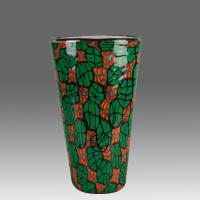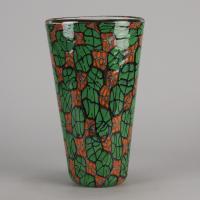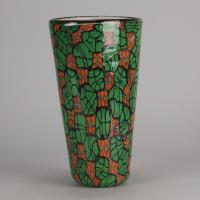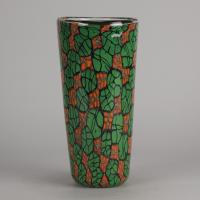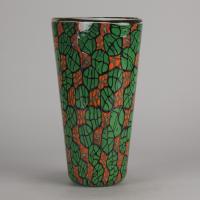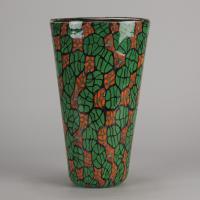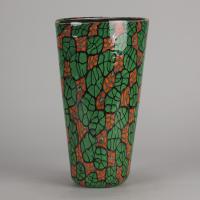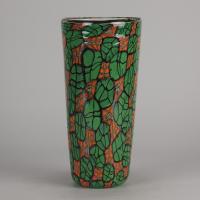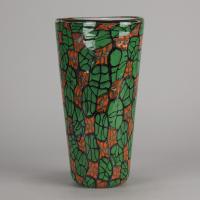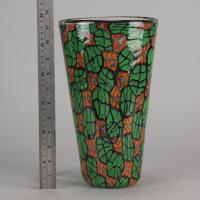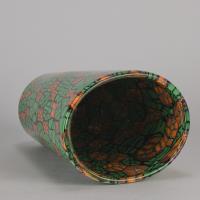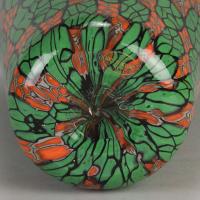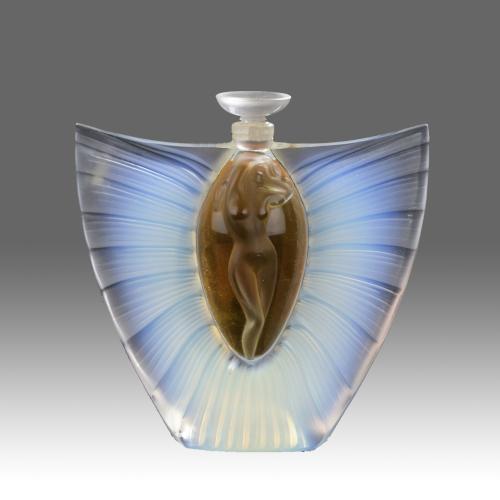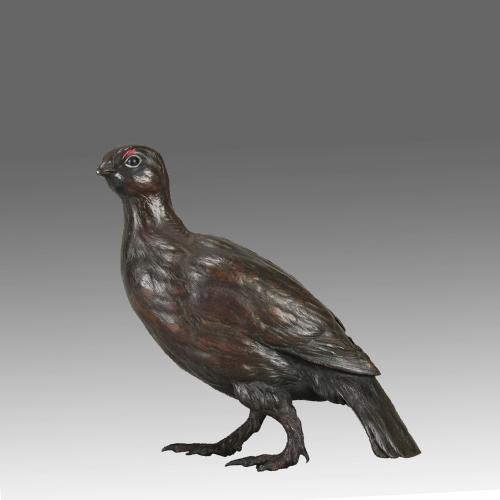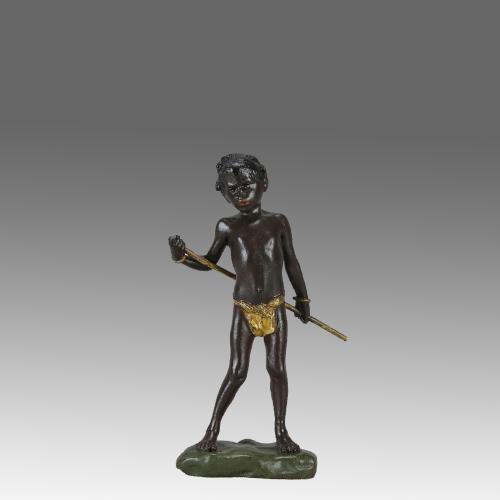
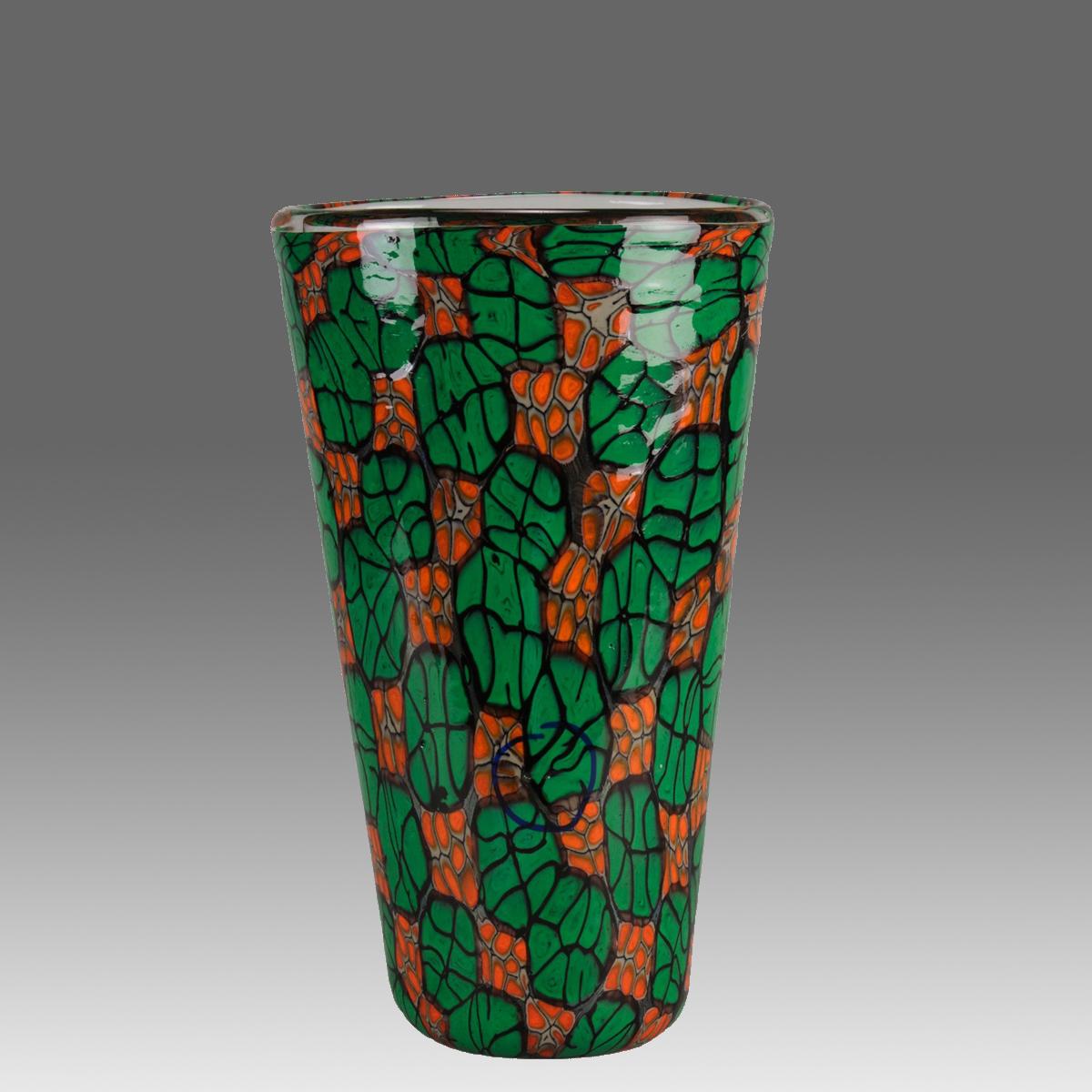
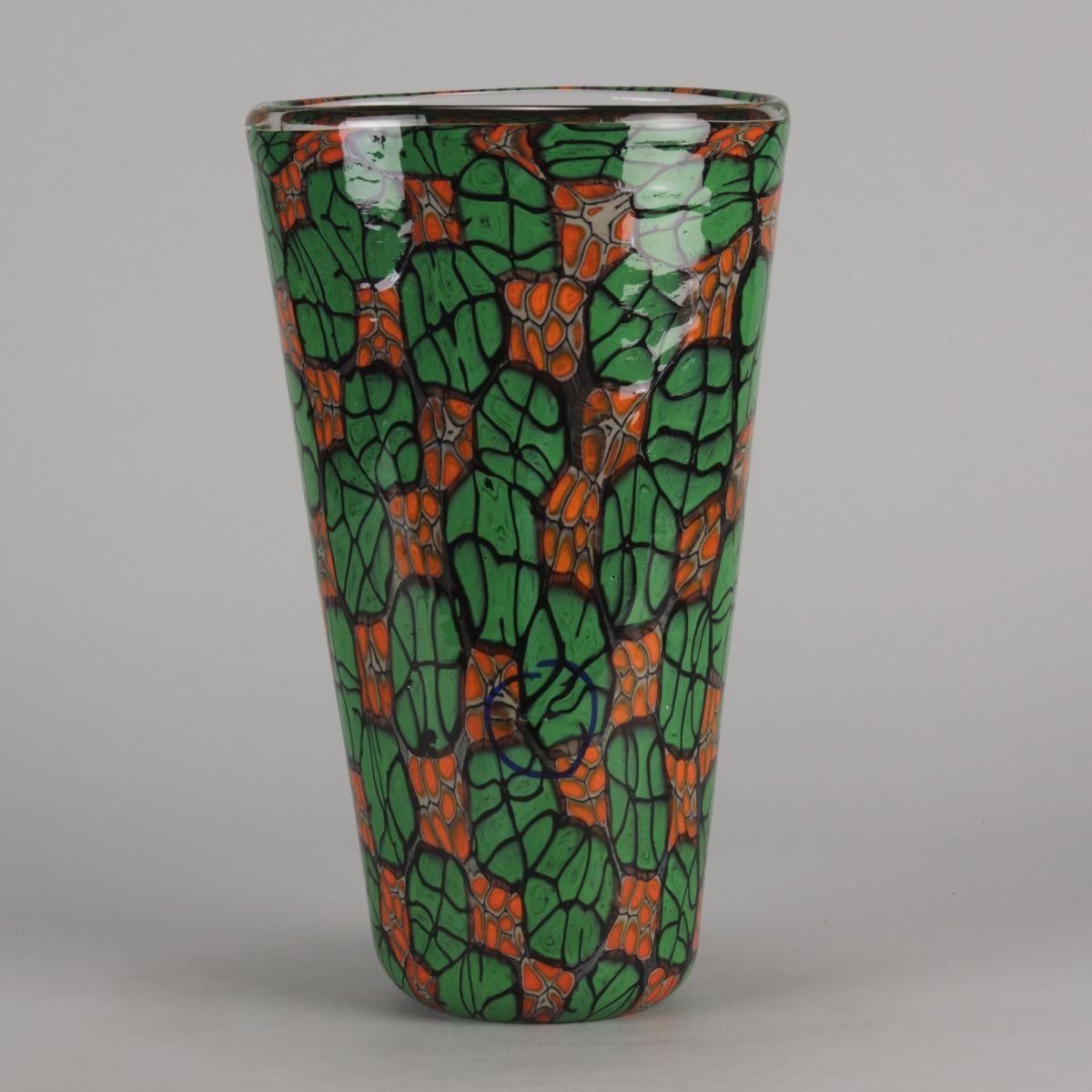
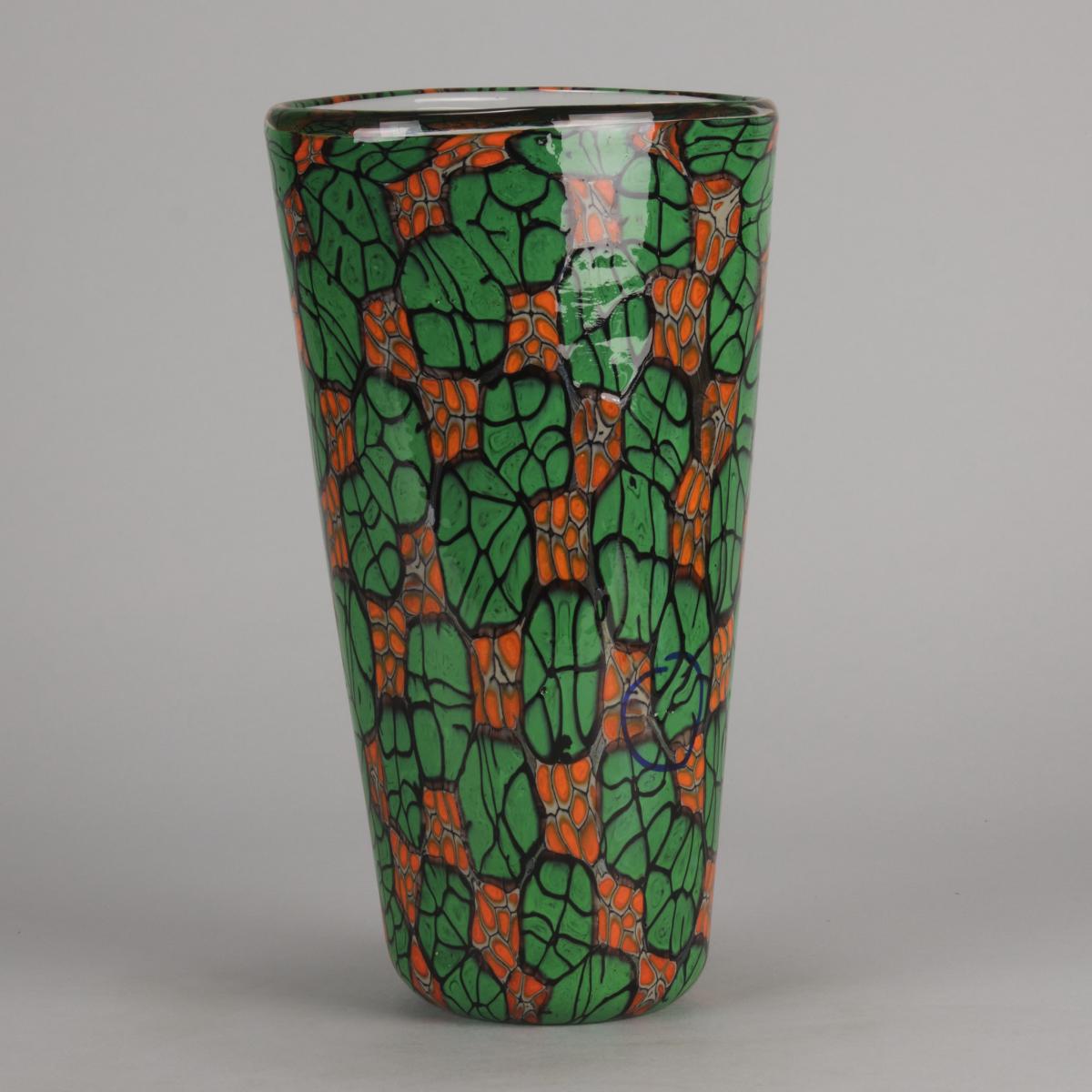
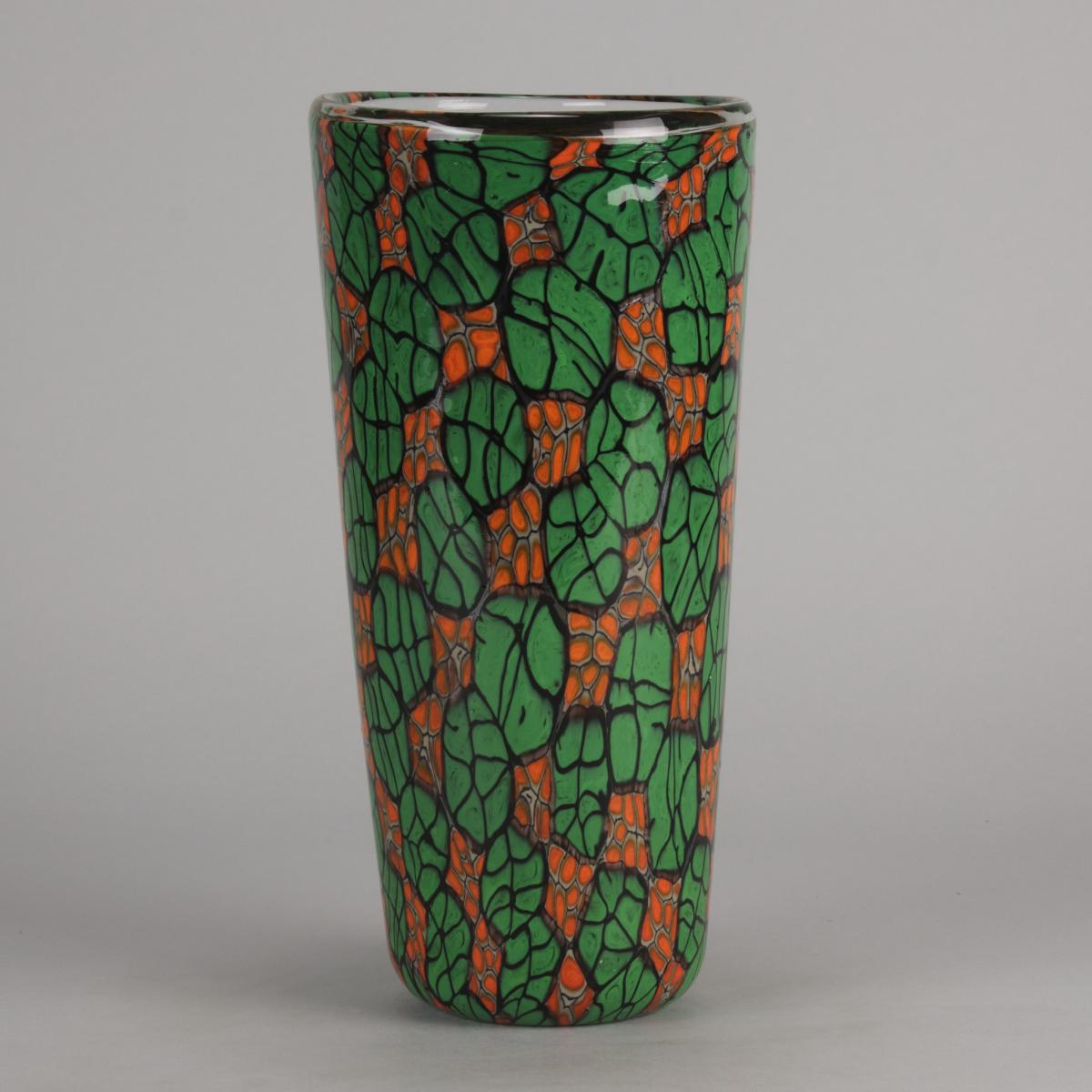
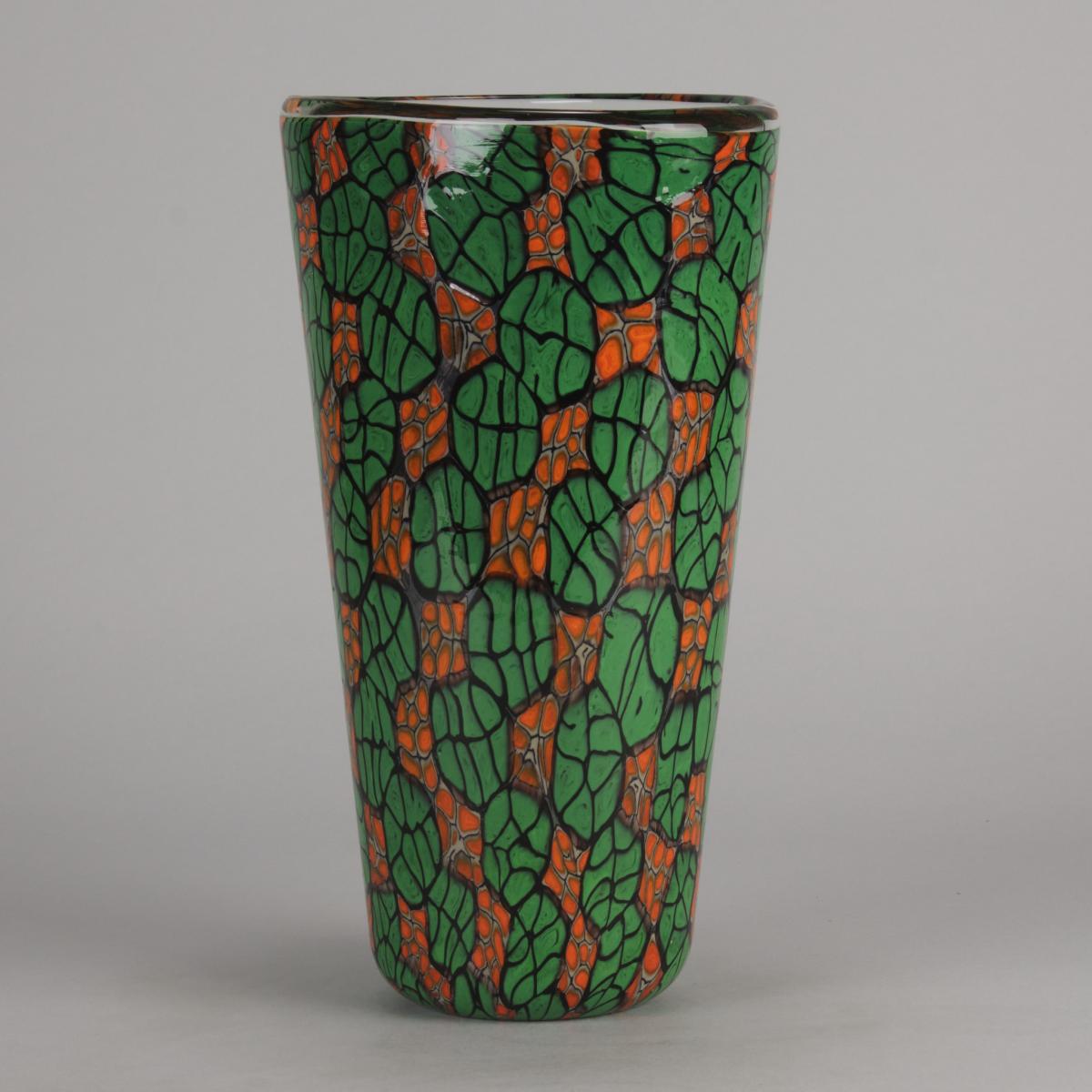
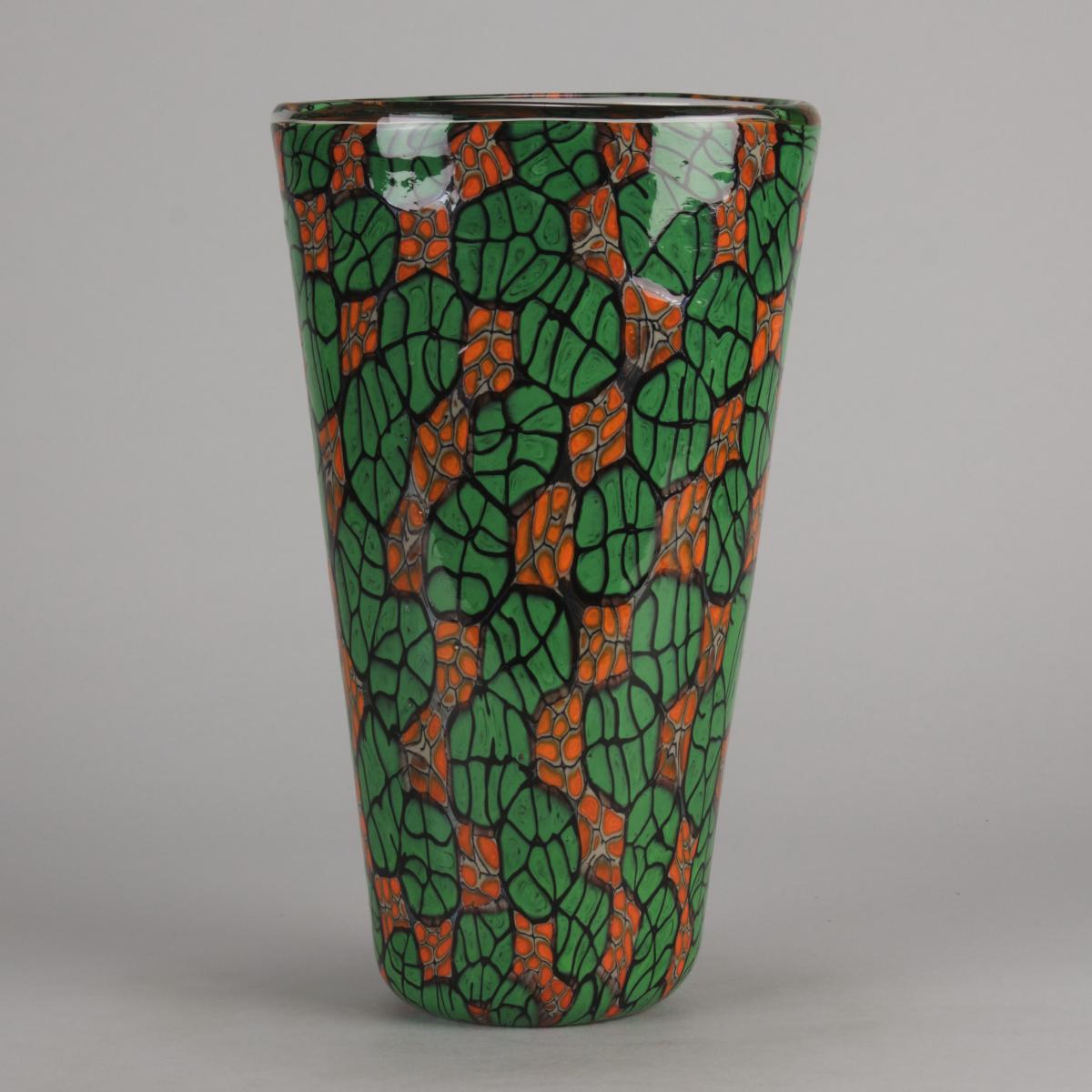
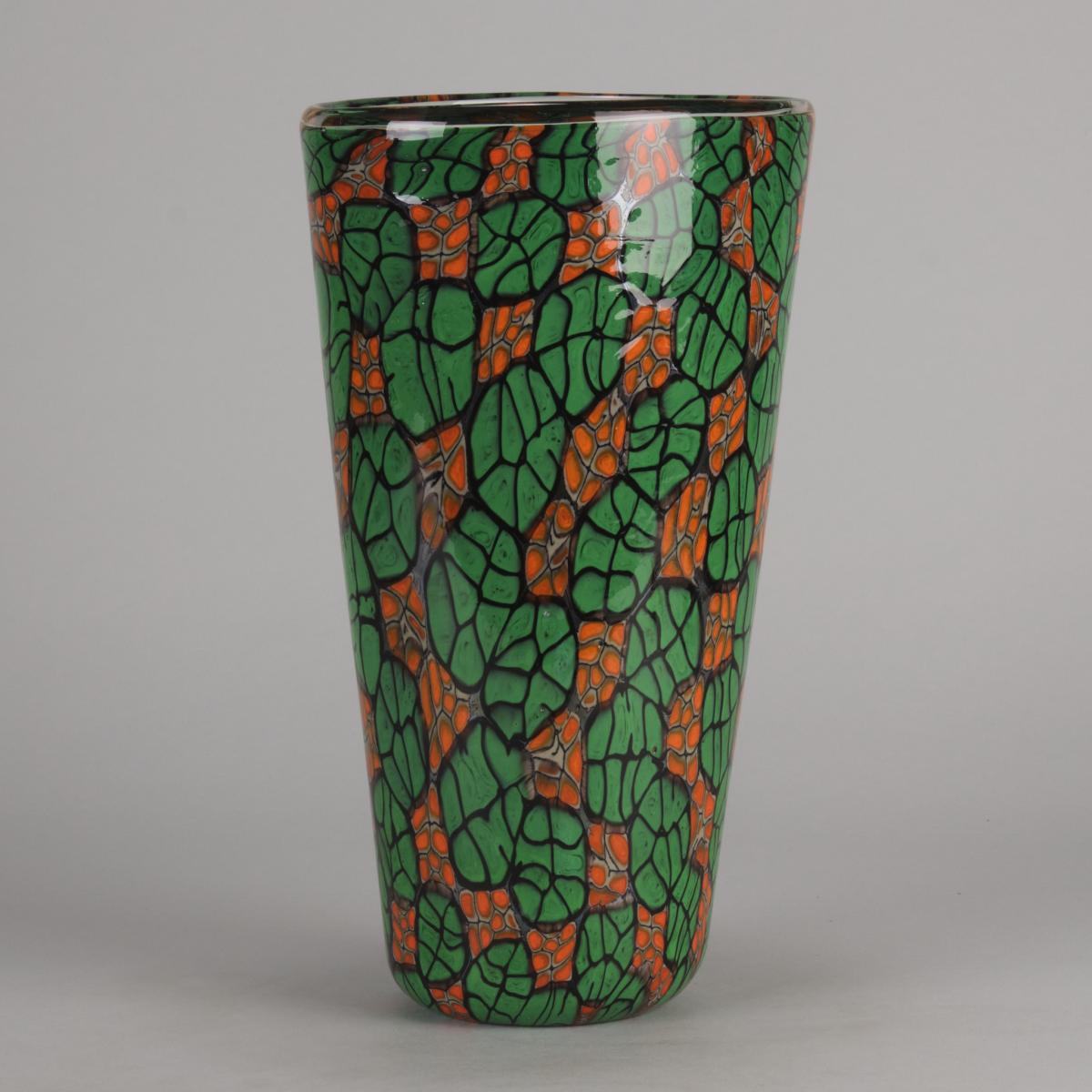
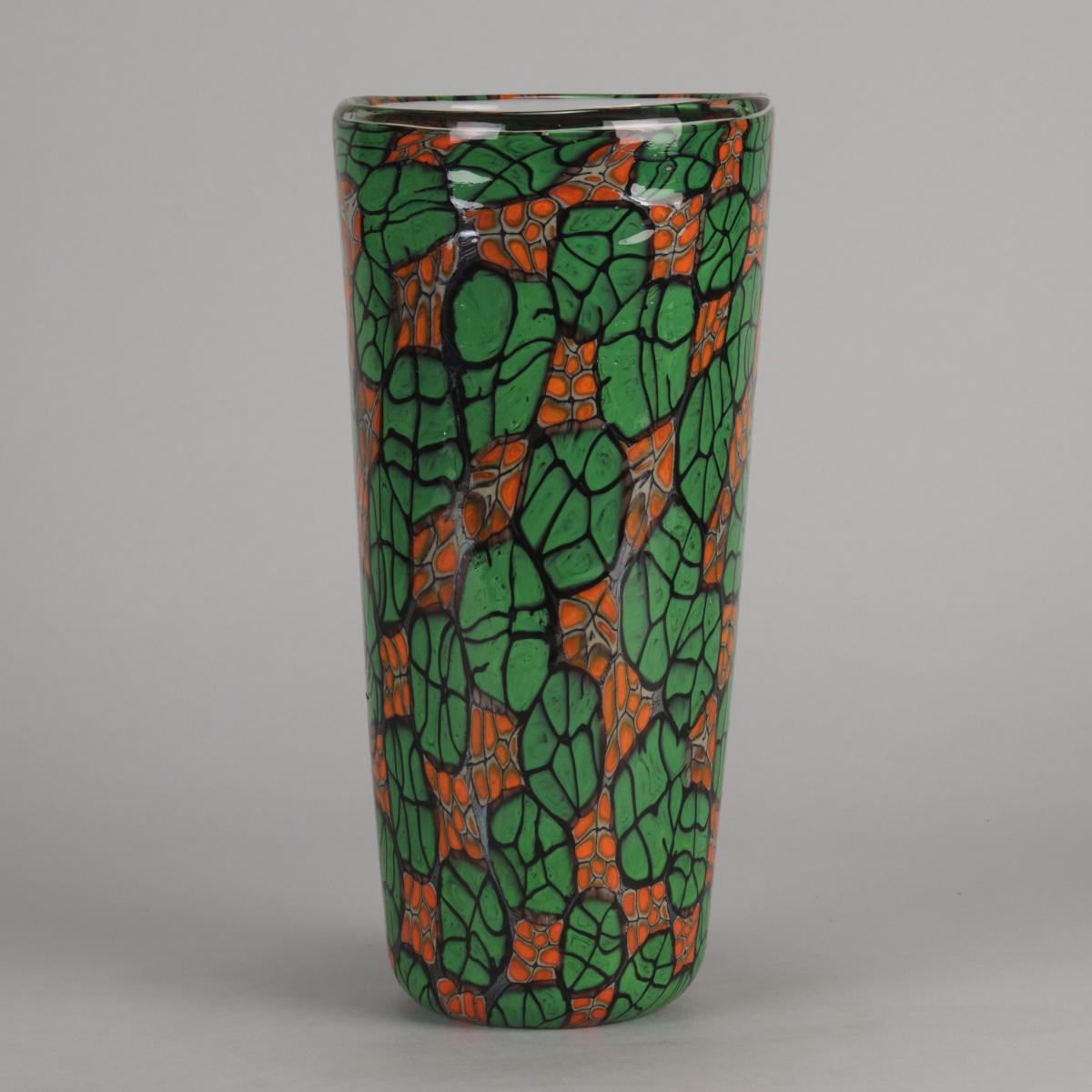
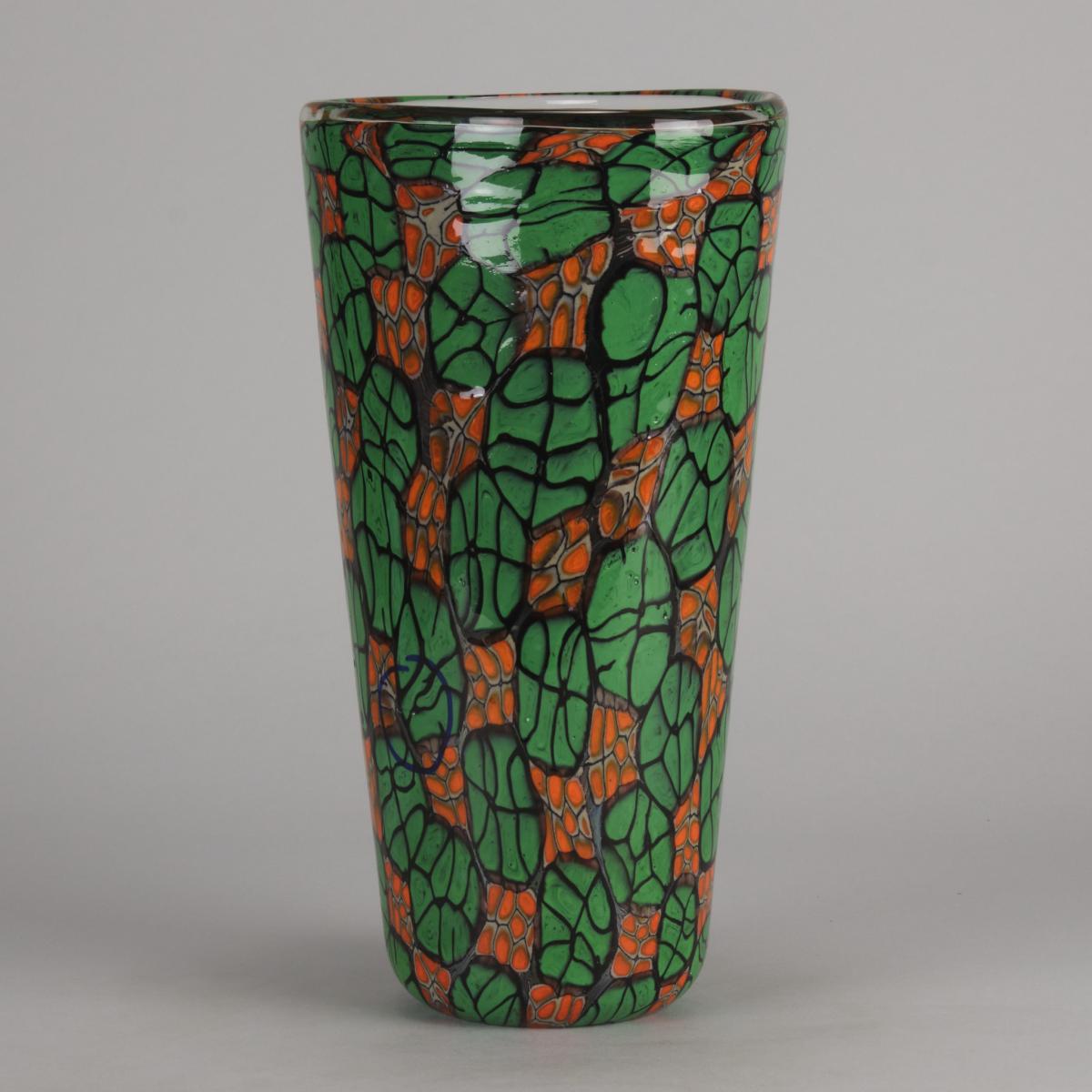
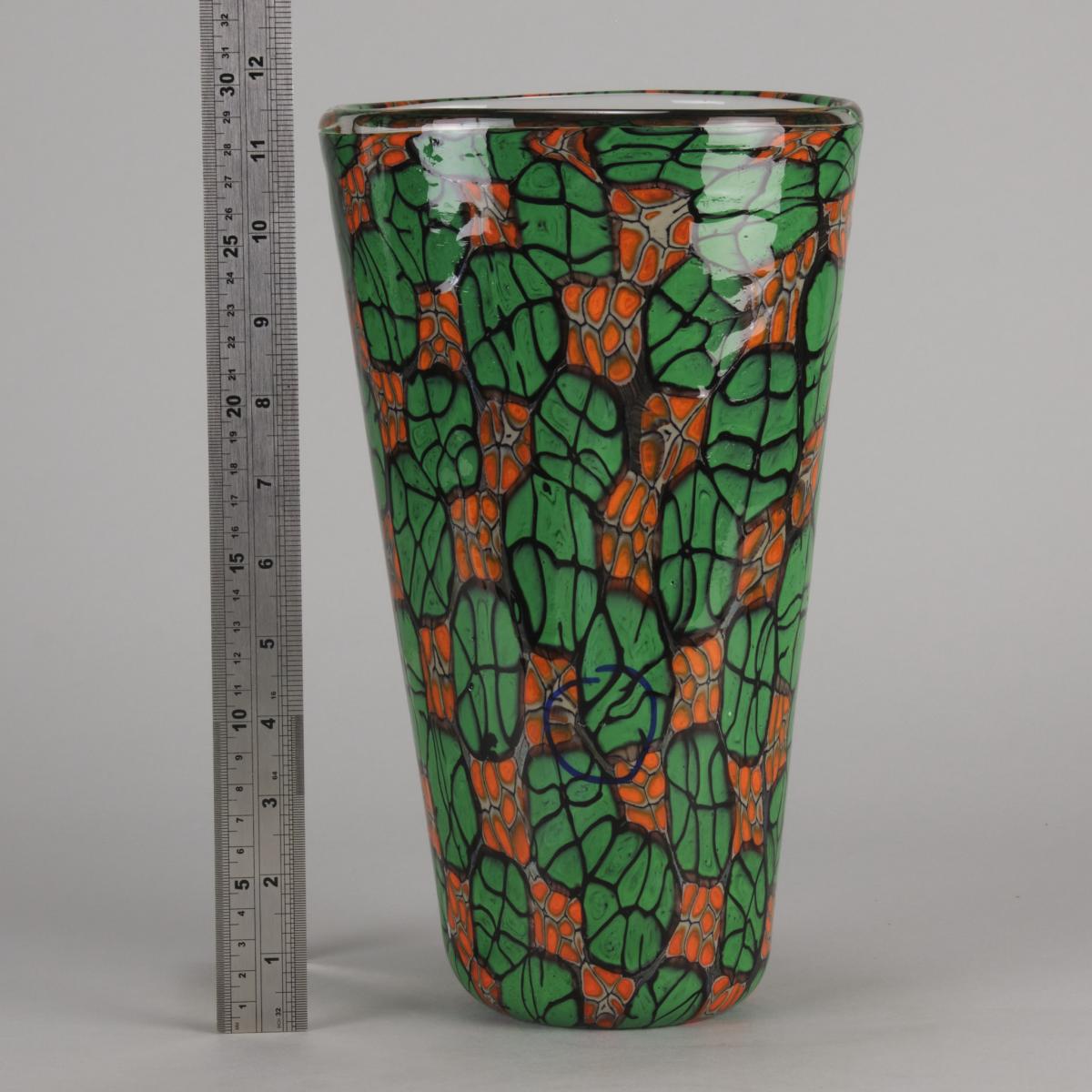
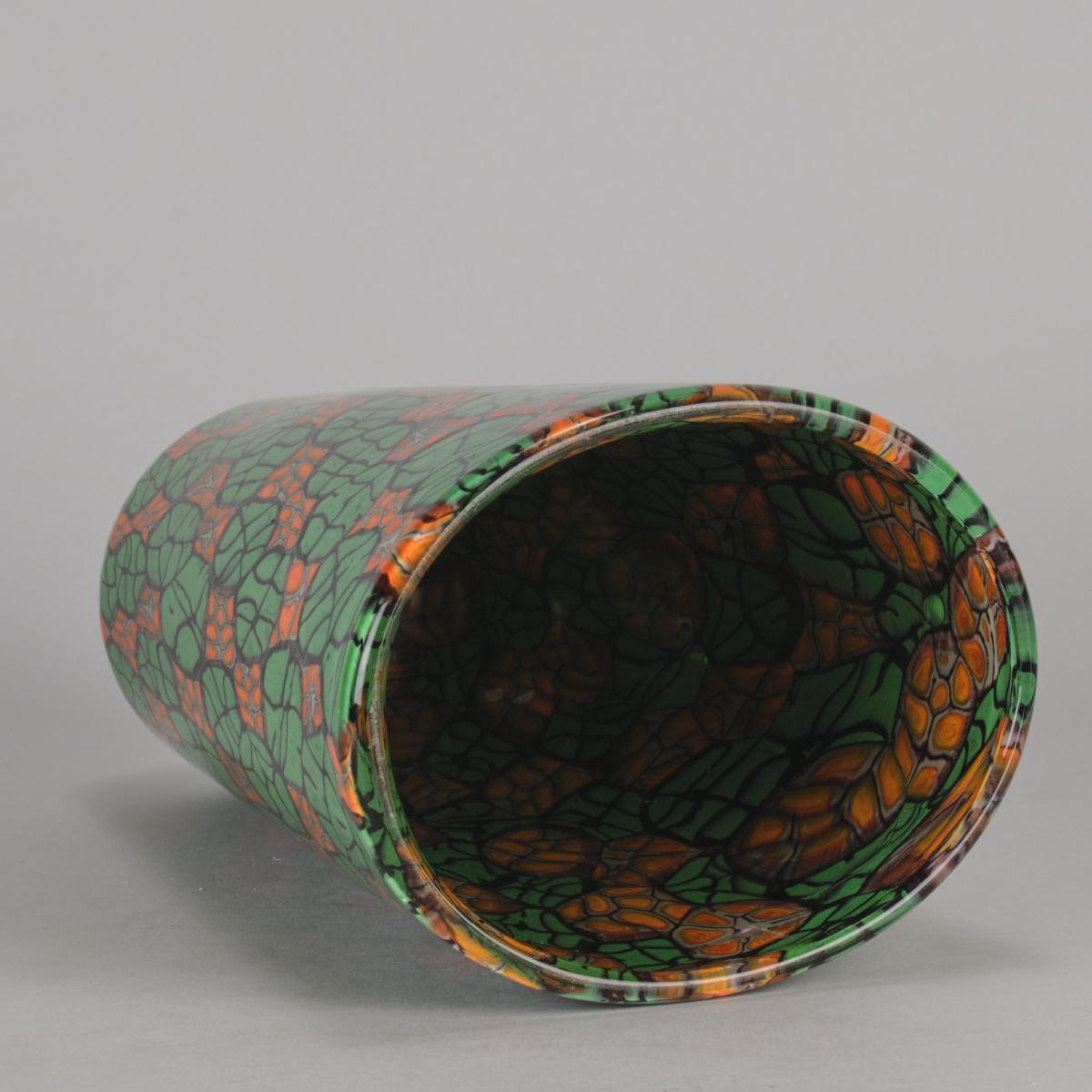
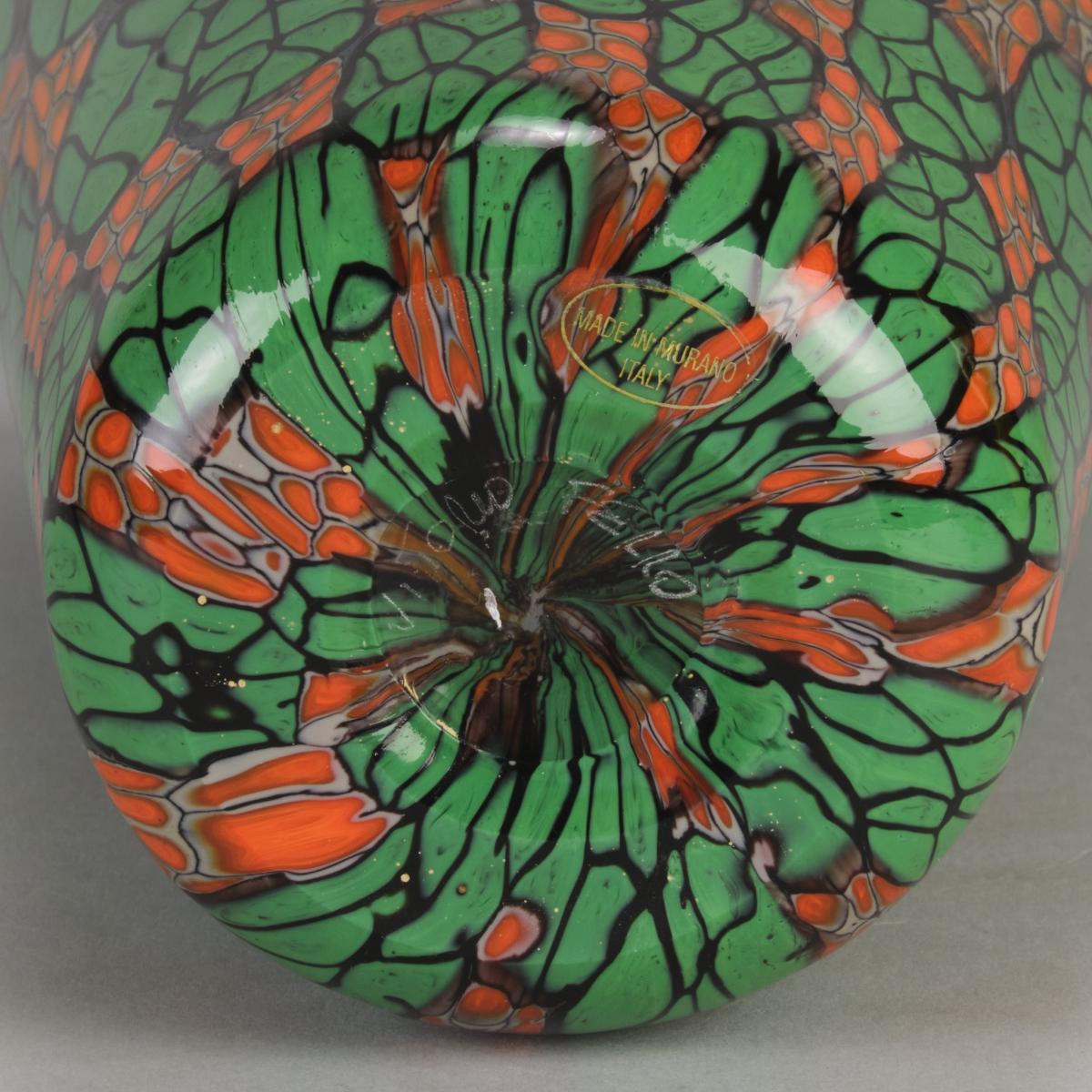
Price
£1350.00This object is eligible for a Certificate of BADA Provenance
The BADA Standard
- Since 1918, BADA has been the leading association for the antiques and fine art trade
- Members are elected for their knowledge, integrity and quality of stock
- Our clients are protected by BADA’s code of conduct
- Our dealers’ membership is reviewed and renewed annually
- Bada.org is a non-profit site: clients deal directly with members and they pay no hidden fees
An attractive modernist hand blown glass vase decorated with Murrine patterned deep green and red abstract design with black borders. Signed Vittorio Ferro and with original Murano label.
ADDITIONAL INFORMATION
Height: 29.5 cm.
Condition: Excellent Original Condition.
Circa: 1970.
Materials: Hand Blown Coloured Glass.
SKU: 6605.
ABOUT
Vittorio Ferro, Italian 1932 ~ 2012
Vittorio Ferro, a distinguished Murano glass artist, was born in 1932 in Murano, Italy. Renowned for his innovative and masterful glass creations, Ferro began his artistic journey at a young age, apprenticing under the guidance of Murano's skilled artisans. His early exposure to the traditional Venetian glassblowing techniques laid the foundation for his groundbreaking work in the field.
Ferro's artistic evolution unfolded through decades of experimentation with form, color, and texture. His signature style seamlessly blends traditional craftsmanship with contemporary design, earning him international acclaim. His glass sculptures, chandeliers, and intricate glassware reflect a harmonious synthesis of tradition and modernity. Beyond his artistic prowess, Ferro played a pivotal role in preserving and advancing the Murano glassmaking heritage.
Throughout his illustrious career, Vittorio Ferro's works have been exhibited in prestigious galleries and museums worldwide, solidifying his legacy as a visionary Murano artist who pushed the boundaries of traditional glass artistry.
Murano Glass
The history of Murano glass is a tale of artistic ingenuity and innovation, rooted in the small Venetian island of Murano, Italy. Dating back to the late 13th century, the glassmaking industry in Murano evolved as a strategic move to protect the city of Venice from the risk of fires caused by glass furnaces. Murano's glass artisans were required to relocate to the island, where they refined their craft in isolation.
Over the centuries, Murano glassmakers became masters of their trade, pioneering techniques such as crystalline glass, enameling, and millefiori. The Renaissance period witnessed Murano glass achieving unprecedented levels of sophistication, with intricate designs and vibrant colors becoming hallmarks of the art form. Murano's glass industry continued to flourish through the Baroque and Rococo eras, and its reputation for producing exquisite chandeliers, mirrors, and decorative glassware spread across Europe.
Despite economic challenges and competition, Murano glass has endured, remaining a symbol of Italian craftsmanship and artistic excellence. Today, Murano glass continues to captivate collectors and enthusiasts worldwide, honoring a legacy that spans over seven centuries.
Murrine Technique
Murrino glass has very ancient origins, the first works date back to 3,000-2,000 BC by Syrian, Egyptian and Roman glassmakers. The term “Murrino” was used to identify all the mosaic glass vases and bowls that the Romans made using cane sections that presented inside them, along their entire length, abstract or figurative designs such as faces, flowers and animals. These vases were made of murrha, a material characterized by the presence of Fluorite which gives the objects a particular smell, perhaps due to the resins used as a binder during the process or more likely because they were used to contain perfumes.
During the Middle Ages the murrino glass technique was lost, but was taken up again leter towards the end of the XIX century at the Salviati glassworks by Vincenzo Moretti. Since then the term murrino was remained and is used to identify both the individual sections of the cane and the object obtained from their composition.
To form a simple murrina with overlapping concentric layers, it is necessary in the furncace the presence of crucibles with soft-colored glass of different colors. A worker then takes a small amount of glass from the first crucible on the tip of an iron rod, passing immediately afterwards to cover it with other glass taken from a second crucible. This proceeds by superimposing several layers of different colors: these layers of glass will form all together a cylinder weighing five, six kilograms.
Once the cylinder has been made regular by rolling it over a thick iron or bronze plate, a second iron rod is applied to the free part. Everything then passes into the hands of two other workers, the “tiracanna”, who will stretch the mash to bring it to the programmed diameter. In this case you will get a murrina with concentric circles designs. If the soft glass mash is inserted into a mold with vertical ribs in the shape of a flower, star or heart, you will have a murrina with a floral, star or heart shape.
The obtained sticks (or canes) are used to produce the “mosaic” (or “millefiori”) pearls, plates, bowls or pendants. To make pearls it is necessary to cover the light layer of molten glass wrapped around the iron rod (core) with many slices of these rods and compact them with simple tools while giving the desired shape at the same time.
The use of the copper mold, which can have the most different shape and dimensions, allows to obtain objects that are all perfectly equal to each other, which is impossible without resorting to this system.
Still the murrine are produced by Murano glassmakers according to ancient techniques handed down from generation to generation.
Even the masters of Murano Design glassware follow this ancient tradition by inserting murrinas in their creations.
Stock number
6605The BADA Standard
- Since 1918, BADA has been the leading association for the antiques and fine art trade
- Members are elected for their knowledge, integrity and quality of stock
- Our clients are protected by BADA’s code of conduct
- Our dealers’ membership is reviewed and renewed annually
- Bada.org is a non-profit site: clients deal directly with members and they pay no hidden fees


